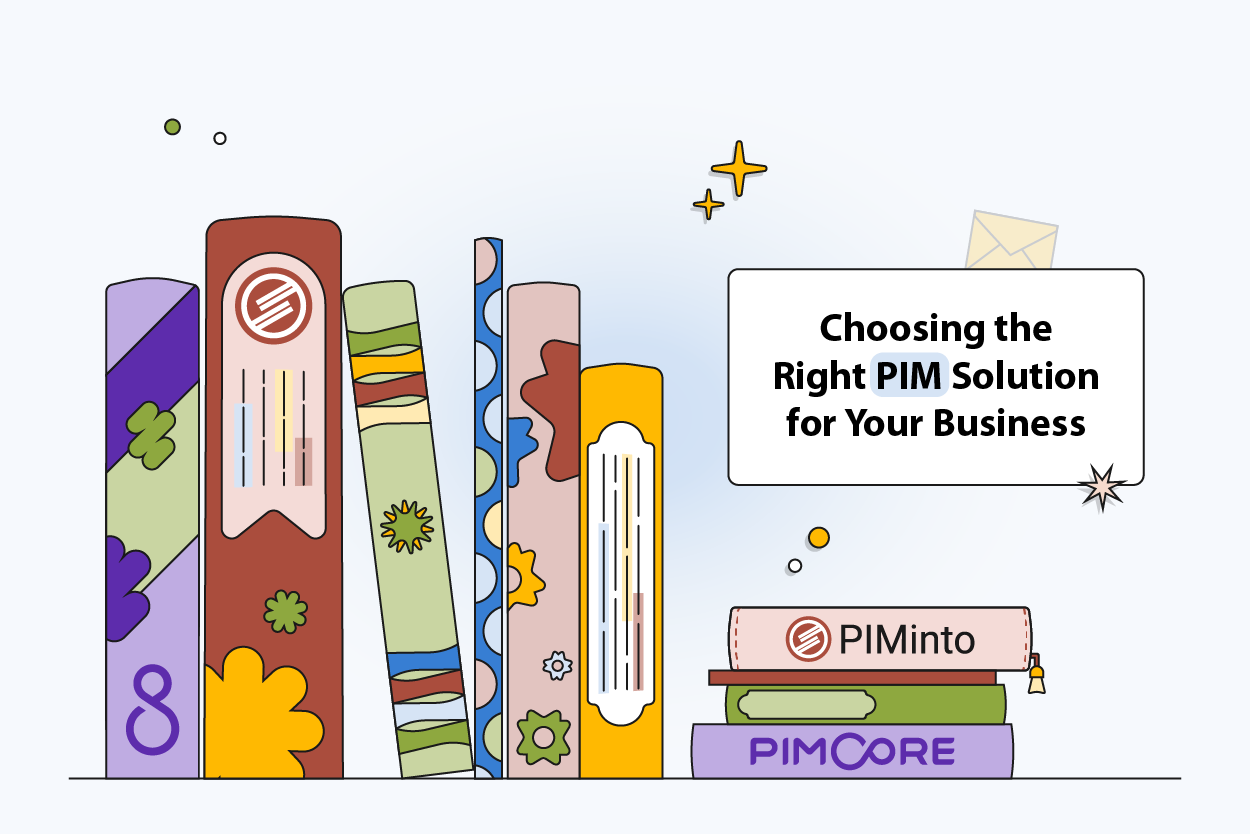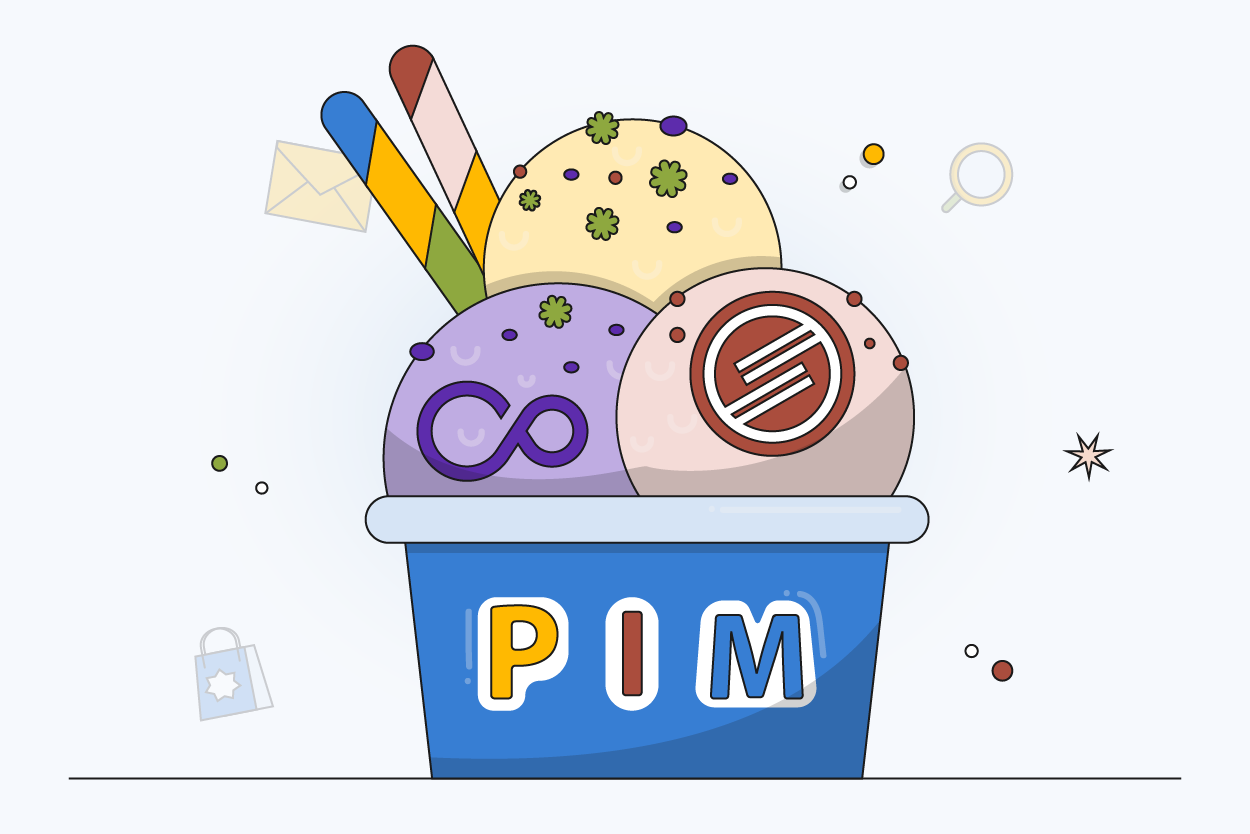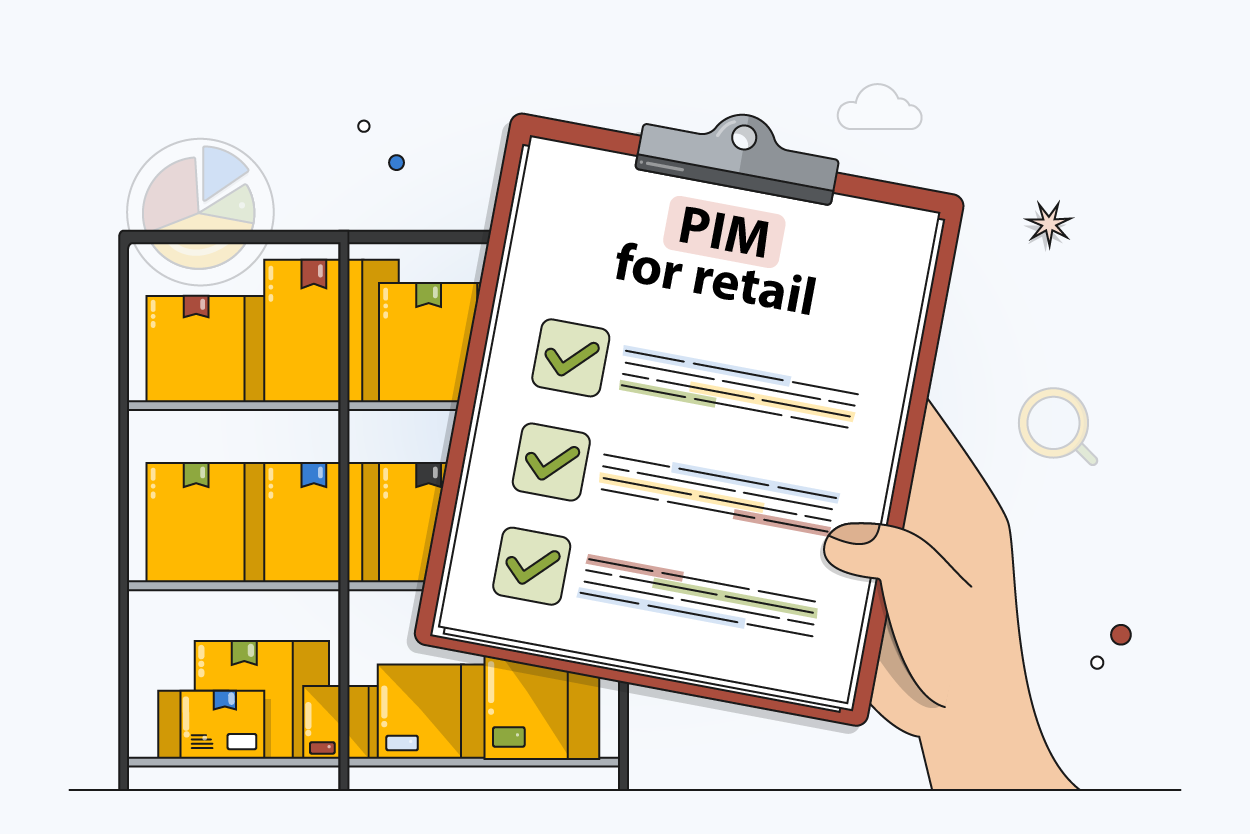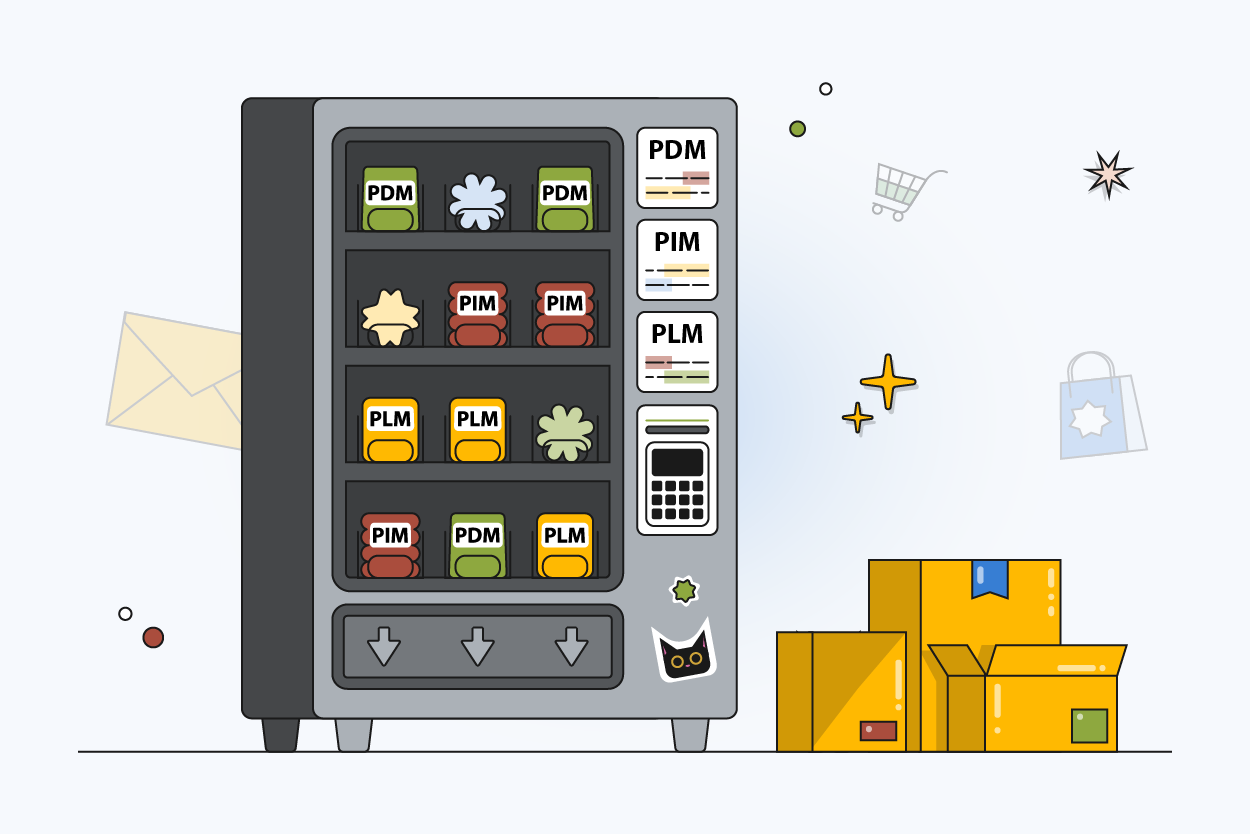PIMinto vs Pimcore: Choosing the Right PIM Solution for Your Business

Managing product data has become one of the biggest challenges for modern ecommerce teams. As catalogs grow and sales expand across new channels, spreadsheets and manual processes quickly fall apart. Brands that want to compete need reliable Product Information Management systems to keep data accurate, consistent, and ready for every platform. Two of the most well-known options are PIMinto and Pimcore. Both aim to solve the same core problem, but they take very different paths in how they approach the solution. This guide will walk through the differences between PIMinto vs Pimcore. We’ll look at features, pricing, support, and use cases so you can confidently choose the best PIM solution for your business.
PIMinto vs Pimcore: A quick overview
Before diving into detailed comparisons, it’s useful to take a high-level look at both platforms. While they are both PIM tools, their origins and design philosophies set them apart from the start.
PIMinto
PIMinto was created in order to make professional-level PIM functionality available to small and medium-sized ecommerce businesses without the cost of traditional enterprise solutions. It offers straightforward plans, unlimited users, and convenient training.
Key features include integrated digital asset management (DAM), Shopify and BigCommerce connectors, and output flexibility. Even the free version has sufficient functionality to manage a catalog of 1,000 SKUs for distribution.
Pimcore
Pimcore has a very different profile. Originally developed as an open-source PIM platform, Pimcore has grown into a broad ecosystem that includes master data management, content management, and ecommerce modules. It’s extremely flexible, with options for on-premise, cloud, or managed PaaS deployment.
But that flexibility costs money: implementing Pimcore often requires developer support, frequent customization, and between $10,000 and nearly $40,000 a year in licensing fees for supported versions.

Why This Comparison Matters
The challenge many businesses face is finding a PIM solution that truly fits their stage of growth. Some platforms are designed with enterprise complexity in mind. They offer endless customization and integration options, but require long rollouts and heavy IT involvement.
Others are built with smaller teams in mind. They focus on usability and predictable pricing, but sometimes lack the depth larger organizations need.
A Pimcore vs PIMinto comparison matters because it highlights how two leading platforms approach these trade-offs. The evaluation goes beyond feature lists to include the real factors that influence success:
- Cost: The pricing model and what the full investment looks like once the system is in use.
- Implementation: The time, effort, and skills needed to get the platform running and keep it maintained.
- Scalability: How well the system adapts as catalogs expand, new channels are added, and teams grow.

Two Different Approaches: What's the Real Difference for Your Business?
PIM systems may aim for the same outcome, but the way each platform is designed has a big impact on day-to-day use. The structure of the software, the pricing model, and the implementation process all shape how teams work with product information.
Pimcore reflects an enterprise software approach with deep customization options and multiple licensing tiers. PIMinto focuses on straightforward deployment, clear pricing, and features that expand with the needs of the business.
The Hidden Cost of Complex PIMs
Pimcore is designed to be a flexible data hub. That flexibility is powerful, but it brings hidden costs:
- Implementation Delays: Setting up connectors and customizing workflows often takes months.
- Developer Dependency: Many businesses hire specialized Pimcore developers.
- Ongoing Expense: Even after licensing, companies budget for maintenance and upgrades.
What Growing Businesses Actually Need
Most ecommerce brands don’t need enterprise-grade MDM. They need a PIM solution that:
- Centralizes product data.
- Makes it easy to publish to Shopify, BigCommerce, or Amazon.
- Handles digital assets like product photos and videos.
- Is intuitive enough for merchandisers and marketers to use directly.
Real-World Scenario
Take an outdoor gear company with 25,000 SKUs across apparel and equipment. If they choose Pimcore, they’ll budget for developers, plan a multi-month rollout, and spend at least $30,000 per year.
With PIMinto, they’d likely choose the Premium plan at $600/month, import their SKUs, and be live in weeks with training included.
Real Companies, Real Results with PIMinto
Key Features Comparison
When looking at PIM features, both platforms cover the basics of storing, organizing, and publishing product data. The difference lies in how accessible those capabilities are for day-to-day business users.
Core PIM Functionality
| Feature | PIMinto | Pimcore |
|---|---|---|
| Product Attributes | Easy to configure with validation rules | Highly customizable, requires setup |
| Variants | Simple to set up with clear attribute-based definitions | Advanced variant modeling |
| Digital Asset Management (DAM) | Integrated with product data | Full-featured standalone DAM |
| Connectors | Built-in for Shopify & BigCommerce | Marketplace, APIs, or custom |
| Permissions & Views | Visual management interface | Flexible but developer-driven |
| Data Import/Export | Built-in tools with flexible formats and transformation options | Broad support for multiple formats and integrations |
PIMinto Advantages
PIMinto stands out with its simplicity: unlimited users, easy bulk updates, built-in connectors, and included onboarding across every plan. It’s ideal for teams that need a fast path to centralized product data.
Pimcore Advantages
Pimcore’s strength lies in its flexibility. Enterprises with complex data models, regulatory requirements, or custom workflows can use Pimcore as a central digital hub that goes beyond PIM.
Scalability & Flexibility
Scalability sits at the center of any PIM system comparison. A platform that feels efficient with a small catalog can quickly show strain once product counts rise into the tens of thousands. Higher volumes add pressure on storage, performance, and the workflows teams depend on every day.
Flexibility is equally important. Businesses regularly launch new product lines, expand into additional channels, and adjust to shifting ecommerce platforms. A PIM has to keep pace with those changes instead of forcing workarounds.
The systems that scale smoothly and adapt to new demands remain valuable long term. Those that can’t adjust often slow growth and create costly bottlenecks.
PIMinto Approach
PIMinto is designed to grow alongside a business rather than force a costly platform change. Companies can begin with a modest catalog and scale up to millions of SKUs on the same system.
The platform manages large product sets with structured attributes, variant definitions, and dynamic category filters. These tools keep catalogs organized even as they become more complex.
As businesses expand into new channels, PIMinto supports them through flexible views and data transformations. This allows product information to remain consistent across an expanding set of outputs.
Pimcore Approach
Pimcore is built with an enterprise architecture that can handle very large and intricate catalogs. It supports multi-brand environments, regional variations, and complex product hierarchies.
The platform also integrates with ERP, CMS, and other third-party systems, making it powerful for organizations managing diverse data models.
However, scaling effectively on Pimcore usually requires IT oversight and developer involvement. Infrastructure planning, whether on-premise, cloud, or managed PaaS, is part of the equation.
For enterprises with these resources, Pimcore can manage almost unlimited growth. For smaller teams, that same complexity can create delays and extra costs.
Pricing Reality Check
Pricing is one of the starkest contrasts in the PIM system comparison between PIMinto and Pimcore.
PIMinto: Transparent & Predictable
PIMinto publishes clear monthly prices:
- Starter: Free (1,000 SKUs)
- Essentials: $300 (10,000 SKUs)
- Premium: $600 (50,000 SKUs)
- Super: $950 (120,000 SKUs)
- Extreme: Custom pricing for 1M+ SKUs
There are no surprise fees. Onboarding and training are included, and support levels scale with the plan.
Pimcore: Complex Cost Structure
Pimcore’s Community Edition is free, but most businesses quickly outgrow it. Paid editions include:
- Professional: $9,900/year
- Enterprise: $29,900/year
- Enterprise PaaS: $39,900/year
These prices exclude implementation, developer costs, and custom integrations, which can far exceed licensing fees.
Total Cost of Ownership Analysis
A mid-size retailer with 50,000 SKUs would spend $7,200 per year on PIMinto Premium. The same retailer on Pimcore could spend $30,000–$50,000 annually once implementation and support are included. For enterprises, that cost may be justified. For SMBs, it’s prohibitive.

Support & Implementation Experience
Support and implementation shape how quickly a PIM solution starts delivering value. Advanced features don’t matter if the rollout stalls for months or if teams can’t reach help when they need it.
When you compare PIM software, check how each platform handles onboarding and ongoing support. Some include training and hands-on guidance with every plan. Others push setup and customization onto internal IT staff or outside consultants.
Implementation timelines highlight the same divide. Certain systems go live in weeks with minimal technical lift. Others require developer-heavy projects that stretch into months. Knowing this difference upfront helps businesses choose a platform that matches the resources they already have.
PIMinto: Personal Partnership Approach
Every PIMinto plan includes onboarding, training, and responsive support. Our team works directly with customers during setup and adoption, so no one has to figure things out alone. The goal is to create a partnership that helps businesses get value from the system right away.
Pimcore: Enterprise Support Model
Pimcore structures its support around enterprise contracts. Community edition users receive no direct assistance, while Enterprise and PaaS customers can access 24/7 support. This model fits large IT organizations but often puts smaller teams at a disadvantage.
Implementation Timeline Reality
The time it takes to get a PIM up and running varies dramatically between the two platforms. PIMinto customers usually go live within a few weeks because the setup process is straightforward and the onboarding team stays involved from the start.
Pimcore implementations often take months. Configuring connectors, customizing workflows, and planning infrastructure all add complexity that requires dedicated IT resources.
This contrast reflects the different audiences each platform serves. PIMinto prioritizes speed and usability, while Pimcore is designed for enterprise organizations that can invest more time and personnel in deployment.
Use Case Scenarios: Who Should Choose What
No PIM solution comparison is complete without considering which types of businesses each platform serves best. Both systems can manage product information effectively, but their design philosophies make them better suited to different situations.
PIMinto is Perfect For
PIMinto works well for companies that need a balance of power and usability. It delivers professional-grade features without forcing teams into enterprise-level complexity. Typical fits include:
- Small and mid-size ecommerce brands.
- Businesses selling on multiple channels such as Shopify, BigCommerce, and Amazon.
- Teams without dedicated IT resources.
- Companies that want a free PIM entry point but expect to grow.
Pimcore Might Be Better For
Pimcore suits organizations that require extensive customization and have the resources to manage it. It thrives in environments where product data needs to connect with other enterprise systems and be governed at scale. Ideal scenarios include:
- Enterprises managing complex global product data.
- Organizations that require on-premise deployments.
- Companies looking for an all-in-one hub that combines PIM, CMS, MDM, and DAM.

The Honest Assessment
A direct comparison of PIMinto vs Pimcore comes down to understanding what each platform is built to deliver.
Pimcore positions itself as a heavyweight enterprise PIM platform, excelling when deep customization and broad system integration are the priority. PIMinto takes a different approach, offering streamlined PIM software that supports ecommerce growth with powerful features and far less complexity.
When conducting a PIM software comparison, be honest about your resources. Do you have developers, time, and budget for enterprise implementation? Or do you need a tool your merchandising team can master in days, not months?
For most businesses, PIMinto offers stronger value for the money. It covers the essentials for managing product data, digital assets, and multiple channels, while sidestepping the high costs and complexity that come with enterprise-first platforms.
The Smart Choice for 2025
Ecommerce in 2025 moves too quickly for long rollouts and unpredictable pricing. Companies need a PIM solution that shows results right away and keeps pace as their catalogs and channels expand.
PIMinto delivers that balance. It combines advanced PIM features with clear pricing and fast adoption, making it the best choice for teams that want impact without unnecessary hurdles.
Blogs & Views
-

Product Descriptions Optimization: 7 Proven Strategies for eCommerce Success
Every word on your product page matters. The right description attracts search traffic, builds trust, and drives sales. Whether you sell on Amazon or your own website, optimized product descriptions act as sales tools that work around the clock to co...

Bradley Taylor
October 20, 2025
-

15 Challenges for eCommerce in 2025
Running an online store in 2025 is exciting and stressful. Ecommerce has evolved to be one of the leading industries globally, but the path to success is filled with challenges. From supply chain insecurity to swelling customer expectations, ecommerc...

Bradley Taylor
October 10, 2025
-

The Complete Guide to PIM for Retail: Transform Your Product Management
Product data drives retail. Every product in your inventory has names, prices, specs, images, videos, and more. Multiply that out across hundreds or thousands of SKUs, spread across multiple channels, and the task of keeping it all current becomes da...

Bradley Taylor
September 29, 2025
-

What is Product Data Management?
Every product has a story to tell before it reaches a customer. An idea sparks, teams draft designs, build prototypes, and refine them into a finished item ready for the market. Along the way, they generate a mountain of technical information that mu...

Bradley Taylor
September 9, 2025


